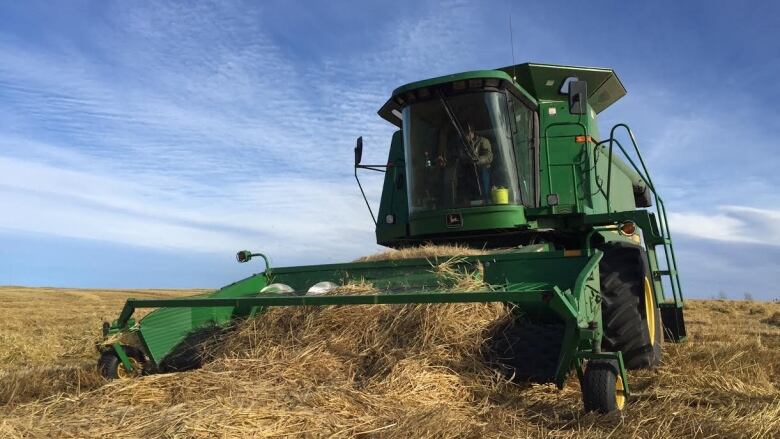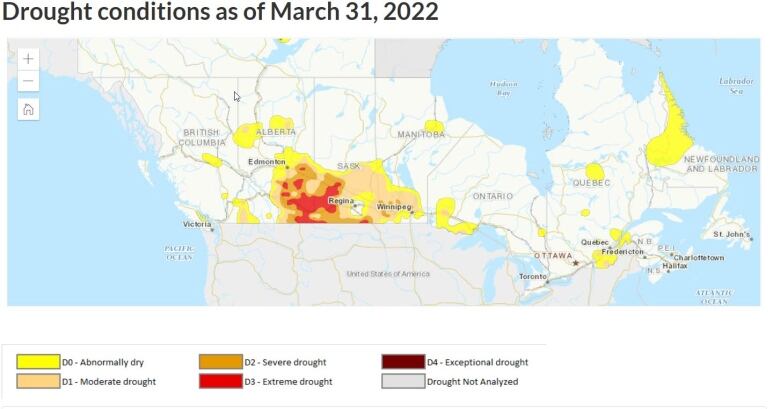Sask. only Canadian province that saw GDP drop in 2021: Statistics Canada
Drought was significant factor in gross domestic product drop: U of Sask. prof

Saskatchewan was the only Canadian province to see a drop in its gross domestic product in 2021 a decline largely caused by the severe drought that slashed farmers' yields and devastated crop quality, according to one economist.
"I think in this case it's pretty clear that that was a significant driving factor to that drop in GDP," said Richard Gray, aUniversity of Saskatchewan professor in agriculture and economics.
Statistics Canada's latest GDPnumbers, released on Tuesday, generally showed a strong economic recovery last year, with every Canadian province and territory posting positive GDP growth except Saskatchewan, whereGDP was down 0.3 per cent.
Neighbouring Alberta saw5.1 per cent growth in GDP, while to the east, Manitoba's was up1.2 per cent.

Gray said Saskatchewan's drop in economic growth is tied to farming and the province's reliance on grain exports for GDP.
"When those sectors are doing well, the economy grows. When they're not doing well, we are more prone to the boom-bust, perhaps, than other areas," Gray said.
Last year's drought resulted in a 48 per cent drop in wheat production and a direct hit to the province's GDP, according to Statistics Canada.
Statistics Canada says Saskatchewan's agriculture, forestry, fishing and hunting sector "suffered its most significant decline since 1997," when the agency began its current method of reporting GDP by industry.
The province's canola production was also down by 45 per cent last year, as crops withered under the unrelenting heat and shriveled in the parched land.
Gray said both Alberta and Manitoba have more diversified, urban economies, which allowed them to weather the drought better than Saskatchewan.
And while oil prices recovered from two years ago, when the pandemic pushed them into negative territory, it wasn't enough to offset Saskatchewan's dismal harvest.
Gray said the province's GDP should rebound this year with grain, oil and potash prices all on the rise.
"Grain prices are basically at record-high levels," he said, adding oil has also rebounded to more than $100 a barrel.
"Potash has certainly rebounded. So we're in a very much of a commodity price spike, which will create a commodity boom in the short run. So Saskatchewan will show some growth."
Gray saidthis winter's snowfall has added moisture to the ground, but more rain is needed to offset the dry conditions that caused last year's drought.

The province's drop in GDP was raised at the provincial legislature during question period Tuesday, with Opposition NDP Leader Ryan Meili blaming the Saskatchewan Party government for the negative growth.
"That's the third year in a row that Saskatchewan's economy has shrunk, and the economy's now smaller than it was a decade ago," Meili said.
Premier Scott Moe said that had the province not experienced the drought, it would have been on track to record a 3.5 per cent increase in GDP last year.
"Look ahead to this current year. The projection is for a four and a half per cent growth in the province," Moe said during question period.












_(720p).jpg)


 OFFICIAL HD MUSIC VIDEO.jpg)
.jpg)



























































































